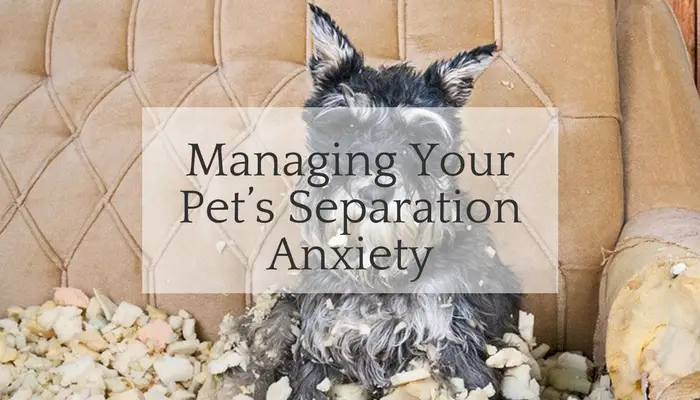Home Alone: Managing Your Pet’s Separation Anxiety
Imagine your family leaving for an indefinite period of time without knowing where or why they’re going and how long they’ll be away. This is what many pets experience when their families leave. Without the ability to understand that they’ll return, pets become anxious—experiencing feelings of fear, depression and other taxing emotions. They communicate these feelings in a variety of ways, causing both their families, and themselves, a great deal of distress otherwise known as separation anxiety.

Top 10 Dirty Dog Food Industry Secrets. Prepare to have your mind blown!
Every dog owner needs to know these 10 secrets of the dog food industry.
I’m truly Gobsmacked !
WHAT IS IT?
Separation anxiety syndrome is a distress response most common in dogs when they’re separated from the person or people they’re most attached to. Roughly 7-28 percent of domesticated dogs may experience some degree of separation anxiety, according to Leighanne Goyder, D.V.M., with Johnson Ranch Veterinary Clinic in Roseville. Dr. Goyder goes on to say that while it’s possible, it’s much less common in cats or other domesticated animals.
CAUSES
While it’s not fully understood why some dogs experience separation anxiety and others don’t, it’s important for families to know that their dogs aren’t trying to punish them for being left alone; rather, their behavior is a panic response. “Some speculated causes include lack of appropriate pet-owner interactions, improper socialization to owner departure and absence, prolonged contact with humans without learning to be alone, traumatic episodes during owner absence, and cognitive decline,” Dr. Goyder says.
Patti Hebert, R.V.T., with MarketPlace Veterinary Hospital in El Dorado Hills, notes that, “It is common practice to label any ‘home alone’ problems as separation anxiety. [Similar behaviors] may not be due to separation anxiety. These behaviors may be seen from boredom. Your pet may not be getting enough exercise, playtime, potty breaks or social contact.” It’s important to rule those possible causes out before concluding that your pet has separation anxiety.

Soure: stories.barkpost.com
SYMPTOMS
According to Dr. Goyder, barking, howling, destructive behavior and inappropriate elimination are the most common symptoms of separation anxiety. She adds that “specific events may trigger anxiety in an affected dog, like getting keys, putting on shoes or jackets, or packing the car, etc.” Really, any undesired behavior, especially those harmful to the dog or the home while you’re away, may be signs of separation anxiety syndrome.
In an attempt to protect their home and belongings, families often turn to leaving their dog outside. Hebert advises against this, stating that, “When left outside, these dogs will turn into escape artists as they tunnel under, chew through or jump over fences. In their attempt to escape, they often injure themselves.”
TREATMENT
If you suspect that your dog may have separation anxiety syndrome, see your veterinarian, who will perform necessary steps to determine the cause of your pet’s symptoms. “Providing your vet with a complete history will help determine if the pet is suffering from a behavioral condition, such as separation anxiety syndrome,” Dr. Goyder explains. The severity of the pet’s behavior will determine the treatment, which may include:
- Behavior modification techniques. Whether alone or in conjunction with other treatments, behavior modification techniques are the best method for managing separation anxiety. Dr. Goyder explains that “independence training, counter conditioning (associating leaving with something pleasant like a good stuffed toy or treat), changing departure and return routines, and graduated planned departures and absences can all help.”
- Oral medication. Some pets with separation anxiety syndrome may be prescribed oral medication to help decrease anxiety. Dr. Goyder recommends that families pair this option with behavior modification techniques for best results.
- DAP plug-in diffusers and collars. DAP is a synthetic version of a pheromone of nursing dogs. It has been found to pacify puppies and can be helpful in calming dogs in fearful, stressful or anxiety-ridden situations.
WHAT WON’T HELP
The Humane Society of the United States has found the following tools in treating separation anxiety to be ineffective:
- Punishment
- Getting another dog
- CratingRadio/TV noise (unless used as a safety cue)
- Obedience training (separation anxiety is not the result of disobedience or lack of training; therefore, it has not been found effective in treating separation anxiety.)
Living with a pet who suffers from separation anxiety syndrome can be extremely difficult, especially for the primary member of the family whom the pet is most attached to. For the well-being of the animal and his “people” family, it’s imperative to identify the problem then work to find an effective treatment.


